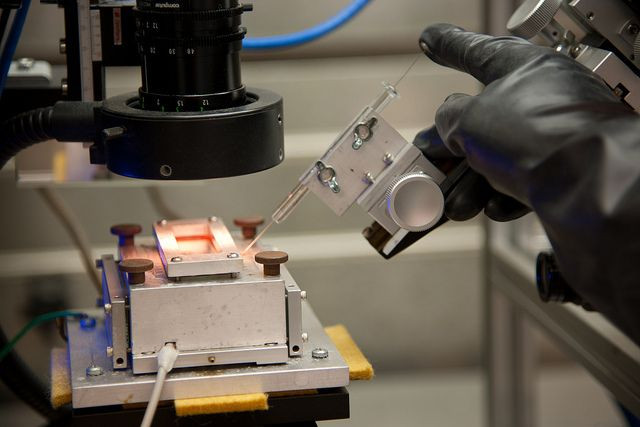Same Genes, Different Bone Tumor: Chondroblastoma, Giant Cell Tumor Of The Bone Underpinned By Same Pair Of Faulty Genes

Two rare types of bone tumor may be the result of a specific pair of gene variants, according to a new study. Researchers from the Wellcome Trust Sanger Institute believe that in nearly all cases of chondroblastoma and giant cell tumor of the bone, the tumor growth is driven by similar mutations in either of two related genes. Besides illuminating new screening strategies, the findings could also help physicians distinguish the benign tumors from malignant cancers.
Published in the journal Nature Genetics, the study examined the genetic mutations underpinning chondroblastoma and giant cell tumor of the bone –– two rare bone tumors that typically affect adolescents and young adults. Although the tumors are usually benign, they can be extremely debilitating, as they can impact both mobility and muscle function. In addition, the tumors tend to recur after surgery.
According to co-lead author Peter Campbell, the new discovery stand to transform both diagnosis and treatment of the two tumors. "This is an exceptional, if not a once in a lifetime discovery for the team," he said in a press release. "What we normally see is that the same mutations occur in many different types of tumor. These mutations, however, are highly specific to these tumors. Moreover, our findings suggest that these mutations are the key, if not the sole, driving force behind these tumors.”
To identify the common mutations, the team used genetic sequencing –– a cutting-edge method of analysis that allows scientists to review an organism’s entire genetic blueprint. In samples from chondroblastoma tumors and giant cell tumors of the bone, the analysis illuminated repeated mutations in two particular genes, H3F3A and H3F3B. The researchers theorize that in nearly one hundred percent of patients, the tumor growth is driven by abnormalities in these two genes’ common protein product, called histone 3.3.
The discovery of a common set of mutations across all cases of chondroblastoma and giant cell tumor of the bone will make it much easier for physicians to distinguish between the benign tumors and highly malignant bone cancer. "Our findings will be highly beneficial to clinicians as we now have a diagnostic marker to differentiate chondroblastoma and giant cell tumor of bones from other bone tumors," said co-lead author Adrienne Flanagan of the Royal National Orthopedic Hospital. "This study highlights the importance of continuing to sequence all types of human cancer."
Today, the use of genetic sequencing in cancer research is transforming the field. Another notable example is National Institutes of Health’s (NIH) Cancer Genome Atlas Pan-Cancer Effort, which seeks to catalog all genetic mutations associated with tumor growth in all cancers. These projects may eventually allow physicians to screen for major malignant cancers with a single test.
Source: Sam Behjati, Patrick S Tarpey, Nadège Presneau, Susanne Scheipl, Nischalan Pillay, Peter Van Loo, David C Wedge, Susanna L Cooke, Gunes Gundem, Helen Davies, Serena Nik-Zainal, Sancha Martin, Stuart McLaren, Victoria Goodie, Ben Robinson, Adam Butler, Jon W Teague, Dina Halai, Bhavisha Khatri, Ola Myklebost, Daniel Baumhoer, Gernot Jundt, Rifat Hamoudi, Roberto Tirabosco, M Fernanda Amary, P Andrew Futreal, Michael R Stratton, Peter J Campbell, Adrienne M Flanagan. Distinct H3F3A and H3F3B driver mutations define chondroblastoma and giant cell tumor of bone. Nature Genetics, 2013
Published by Medicaldaily.com



























